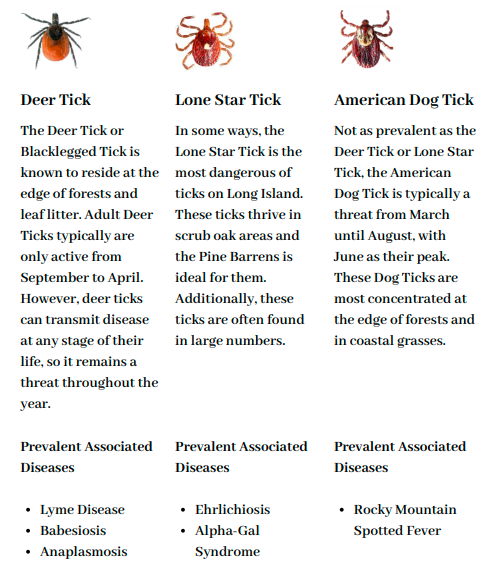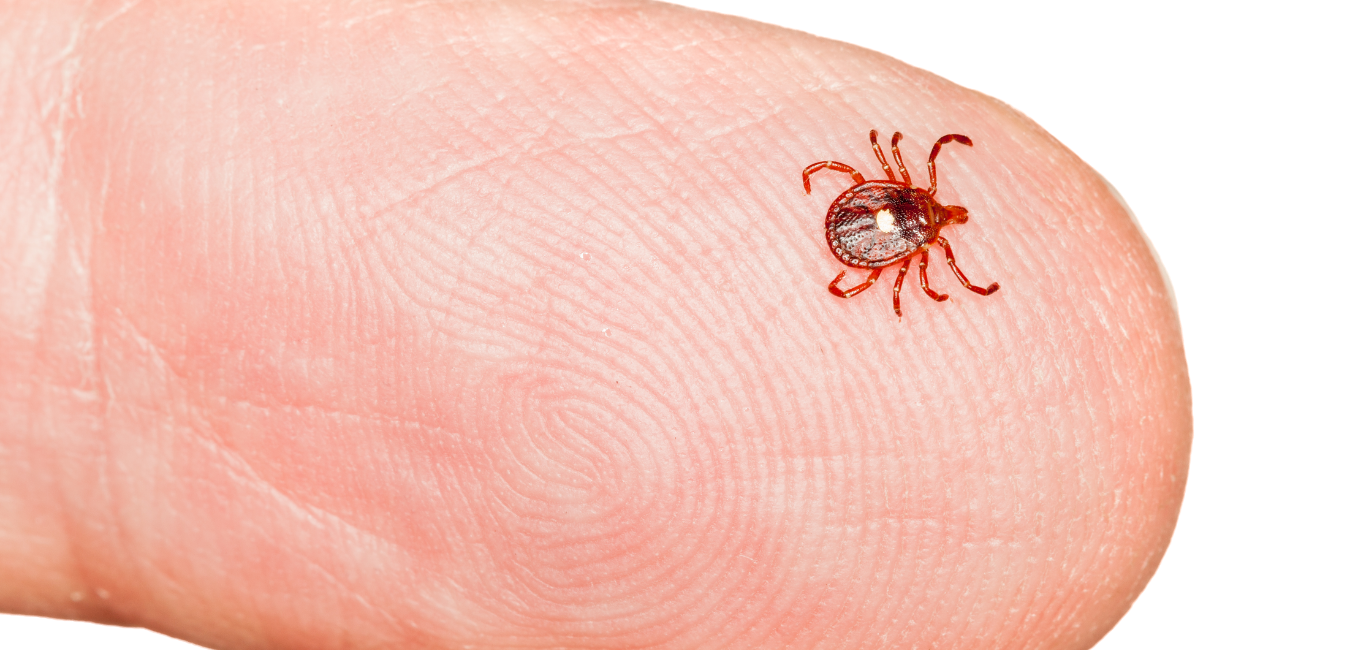It’s no secret that Long Island is a hot-spot for ticks and tickborne illness. Long Island has the highest rate of Lyme Disease in the country. However, even with this fact, it is still uncommon to fall ill to a tickborne illness.
It’s very important to be mindful of ticks while hiking through our woods, but the fear of ticks should not keep you from enjoying Long Island’s beautiful outdoors. The best thing you can do is to know how to prevent these tiny pests from latching on.
Long Island’s Ticks
Tick populations across the United States have been on the rise as a result of climate change and habitat destruction. There are three main species that are prominent within Suffolk County – the Deer Tick, Lone Star Tick and American Dog Tick. A fourth tick, the Longhorn Tick, is expected to reach Long Island within a few years. This chart from our “Detecting Ticks on Long Island” guide breaks down the three most common ticks on Long Island.

Common Ticks Found on Long Island
Many people confuse ticks with chiggers. However, there is no known presence of chiggers on Long Island. People who have come out of the woods with itchy, red legs covered in bites have likely come in contact with Lone Star Tick larvae – which are similar in size and leave bites similar to chiggers.
What to Do Before Entering the Woods
Limit Your Exposure Area – Try and limit the amount of skin that is exposed. Tuck your pants into your socks and shirt into your pants. Tie back long hair. If you can, wear long sleeves and pants. Wear closed-toe shoes. Wear lighter color clothing that will allow you to spot ticks easily.
Wear Tick-Repellant Clothing – Treat your clothes with permethrin or buy clothes already treated with tick-repellant. Always carefully read and follow the instructions when using tick-repellants, many cannot be directly applied to skin but are applied to clothing instead.

While in the Woods
Remain on the Beaten Path – Always stay on designated trails. Avoid walking through tall grasses or through brush.
Check Yourself Mid-Hike – Keep checking your clothing throughout your hike, brush off any ticks you may find.
Before Getting in Your Car – Check for ticks again, especially on your shoes. Some people keep a lint roller in their car and go over their clothing a few times to pick-up tiny larvae.

Pick up ticks and tick larvae using a lint roller.
At Home
It’s important to discover ticks on one’s skin as soon as possible. In most cases, the tick must be attached to your skin for 36-48 hours before it can transmit disease. So, if you find a tick on you right away – don’t panic.
Check Again – Remove all of your clothing and place it in the washer immediately. Check yourself for ticks once again. The most common areas where ticks can be found are: the back of the neck, the scalp, behind the knees, armpits and groin area. Take a shower as soon as you can.
If Bitten – Use tweezers to grab onto the tick and remove it (make sure not to leave the head of the tick behind). Drop the tick down the toilet and flush. Treat the bite using an antiseptic. In the coming days, if you experience fevers or chills, aches and pains, rash, skin ulcers, or any flu-like symptoms, consult a doctor immediately.
Don’t Forget Your Pet
Did you bring your dog along on the hike? It’s important not to forget about your furry friend! As a preventative measure, you can have your veterinarian prescribe flea and tick protection pills or provide a Lyme Disease vaccination shot. Still, always check your dog after and remove any ticks using the method described above. Make sure to especially check behind the ears and between the pads of their toes.
On our guided hikes, we like to tell people, “Be mindful, but not paranoid.” You don’t need to avoid the outdoors all together, just stay informed, prevent bites as best you can and remove any ticks you find immediately.
By: Katie Muether Brown, Long Island Pine Barrens Society


